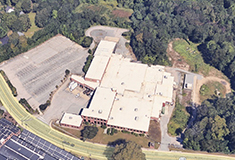Why no development on Route 195 land in Providence?
A few years ago, the State of Rhode Island moved a highway with the intention of opening a large parcel of land for development. Everyone thought that developers would be clamoring for the chance to build on this prime land. To date, not so much. It’s beautiful land, right off the newly relocated Rte. 195 and close to where it meets Rte. 95. What could be the problem?
One theory is that developers are leery about a major string that appears to be attached to the whole deal: Any development on that land will have to be performed with union-only Project Labor Agreements (PLAs). Union-only Project Labor Agreements (PLAs) are a bad deal for taxpayers, and evidently developers feel the same way about them.
PLAs are privately negotiated deals between union representatives and public officials that require projects be awarded only to contractors and subcontractors who agree to: (1) recognize unions as the representatives of their employees on the job; (2) use the union hiring hall to obtain workers; and (3) obey the unions’ restrictive work rules, job classifications and arbitration procedures. All of this adds to the cost of a project by severely limiting competition (only 14% of the construction workforce, in this country, is union). So, Union-Only PLAs virtually eliminate the other 86%, which makes projects more expensive. Economics 101teaches that limiting competition increases prices.
In exchange for including a PLA in the bid specifications for a construction project, the unions promise certain working conditions, such as guarantees of local hiring and no strikes or labor stoppages throughout the life of the project. In practice, however, all a PLA truly guarantees is that the someone will pay more for the project - as the government helps the unions eliminate a majority of their competition.
This decrease in competition leads to higher prices. How high? As much as 12%-18% according to studies conducted by the Beacon Hill Institute at Suffolk University.
By mandating union workforce composition on construction projects such as those that would be built on the so-called 195 land, Rhode Island’s economy is being negatively impacted. A common question heard around the state is “Where are the cranes in the sky?” And that’s a very good question.
This is why 23 states have laws that ban the use of PLAs on public construction projects. By requiring PLAs on projects built on the 195 land, the State of Rhode Island is basically turning them into projects that cost too much to build. To learn more about the harm PLAs cause taxpayers, visit www.thetruthaboutplas.com.
Robert Boisselle is the president of the Associated Builders and Contractors RI Chapter, Pawtucket.
Shawmut Design and Construction breaks ground on the 195 District Park Pavilion in Providence, RI









.png)